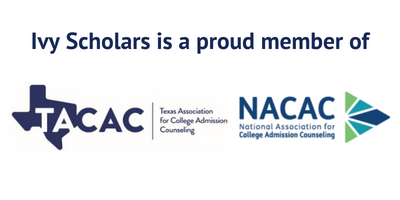Doing research in high school is a great way to show off your academic skill and potential to colleges, one we’ve written about before. An increasing number of students are availing themselves of this option; indeed, our research mentorship program exists to help our students pursue these high level independent research projects while in high school. Colleges have noticed this, and a number of elite institutions have added separate supplements to allow students to discuss what they have done in a controlled setting. Colleges respect research, but also want to make sure these projects were genuine efforts by the student in question. In this article, we’re going to explore what these research supplements are, and how you should answer them, using examples from a past Ivy Scholars student. Let’s jump in!
How Research Supplements Work
Research supplements are not a required part of a college applications, and you will not be penalized in any way for not including one. They are truly optional, as with all supplemental materials. After all, colleges don’t expect you to be a great artist, but if you are one, then an arts supplement can pique their interest. In the same way, research is not expected, but it can greatly boost your application.
Note that not all schools offer a research supplement; indeed, it is an uncommon thing overall. Schools that accept a full research supplement include MIT, Columbia, and Caltech. Other schools accept abstracts; here is a list of those colleges and their policies:
| College | Abstract Policies |
| Brown | You may upload an abstract through your applicant portal. You should include a brief note with this abstract on the dates you were involved, whether you worked independently, and any recognition you received for your research. |
| Dartmouth | You may submit a single page research abstract, though they do not want anything longer than a page. This may be uploaded through your applicant portal, or emailed to submit@dartmouth.edu |
| Harvard | You may upload an abstract through your applicant portal. You must also attach to this a brief description of what the research was, who you worked with, where the research was conducted, and what your contributions were. |
| Notre Dame | You may technically submit a research abstract through SlideRoom, but they only encourage such submissions from students studying the arts who want to include an arts supplement. |
| UChicago | You may upload an abstract through your applicant portal after completing your application. |
| UPenn | You may submit an abstract through your applicant portal after completing your Penn application. They advise students to use their activities list or essays to discuss their research. |
| WashU | You may submit a research supplement through SlideRoom; there is a $10 fee for doing so. They request this be an abstract only. These are not required, and they encourage you to discuss your research in your essays. |
| Yale | Yale has a form to fill out, this allows you to submit a research abstract, and you may also request an additional letter of recommendation from your research mentor. You must indicate your intent to fill this form out; you will then be able to access it through your Yale portal. Yale only accepts science and technology related research. |
Some schools have no listed policy on whether they accept research supplements. These include:
- Georgetown
- Johns Hopkins
- NYU
- Northwestern
- Princeton
- UT Austin
These schools also often lack a way to upload additional documents, and we advise not submitting any research abstracts to them, but instead finding ways to highlight your research through your essays.
There are also some colleges which allow you to submit supplemental materials, but specifically do not allow you to send in a research abstract. These include:
- Carnegie Mellon
- Cornell
- Duke
- Stanford
- UC Berkeley
- UCLA
- USC
- Vanderbilt
For the schools that do accept research supplements, they function as other supplemental materials. Once you complete your main application through the Common App, schools give you access to their own portals, where you can check the status of your application and submit supplemental materials. These should be submitted by the application deadline; this means that if you want to include one of these supplements with your applications you should submit your main application early, to give you time to complete these supplements as well.
What Research Supplements Ask For
Each university has a distinct set of requirements for their research supplements, but in general they are looking for the same things. They want to know what you did, why you did it, what help you received, and what your results were. We’re going to look at some specific questions from these supplements, and how best to answer them.
Provide a brief description of your research. Feel free to use technical jargon when necessary—but keep in mind that your audience will include educated readers who may not be experts in your specific field. (1200 char).
EXAMPLE:
In 2020, Google developed the Vision Transformer (ViT), a computer vision model with the potential to outperform Convolutional Neural Networks (CNNs), previously dominant in various imaging tasks. However, ViTs require large datasets (up to over 1 million images in extreme cases) to surpass CNNs, a challenge in medical imaging due to scarce disease data and annotation costs. In my study, I developed a ViT framework to maximize performance with minimal training data for cancer detection. Exploring past approaches while making my own solutions for the pre-training, architecture, and post-training stages, I introduced PCSVI (Post-Convolutional Single Vector Input), a CNN-ViT hybrid that reduces computation with CNN feature compression and uses ViT vector sequencing. Essentially, I found a new way to modify ViT input. I also proposed field-specified weight transfer to improve ethical usage and reduce error while optimizing accuracy. Using three scaled-down pathology datasets for breast, lung, and colon cancers, my framework-enhanced ViT outperformed Google’s vanilla ViT by an average of 27% across repeated trials, matching the performance of dominant CNNs like DenseNet and ResNet.
ANALYSIS:
Note that this is not the same as an abstract; you have a chance to submit one of those separately. Instead this is a brief technical description of what you did, and what results you achieved while doing so. Your language can be technical, but not over heavy on jargon; the example above shows a good balance of this. Someone familiar with the field will be easily able to grasp what the student did, and that is the audience you are writing for.
This particular question is from MIT’s supplement, but most will want a description of what your project was. After this, you are generally asked how you got involved; whether your work was part of a larger effort, and whether or not you had a mentor you worked with.
These questions are not meant to trip you up, but to gain context. There are many summer internships where students work in laboratories and have a chance to contribute to ongoing projects or pursue their own work, and if so, you should properly credit these. This is also an attempt by schools to weed out pay-to-play programs; if admissions officers are going to give you credit for doing research, they want to make sure you are the one who did it. Here is an example of what that looks like from Columbia’s Supplement:
Describe your specific research responsibilities and contributions (750 chars)
EXAMPLE:
I conducted literature review, searching for sources on Google Scholar related to Convolutional Neural Networks and histopathology classification. I wrote a Python script, deploying the Vahadane stain normalization algorithm to reduce model bias when extracting features from the tissue images. I tested various CNNs (VGG16, DenseNet201, ResNet50, and EfficientNetB7) to classify a downloaded histopathology set from Kaggle. I concluded that DenseNet201 was the best model and modified it to utilize a pyramid architecture while adjusting hyperparameters for further testing. I saved different graphs and excel result files to create the figures for my study’s paper. I also wrote the contents of the paper, submitting it to the IEEE ISEC portal.
ANALYSIS:
This is a straightforward description of what the student did, what tools they used, and their specific contributions to the research. In this case, the student was doing an independent research project, one where they did all the work themself. There is no shame to being a part of a team; if you were then state your contributions clearly, and describe what you did to make the overall project a success.
You will also be asked about how long you spent working on your research. In general, the minimum time commitment they expect to see is 100 hours; many projects require more than this. If you spent less time than that on your research, colleges may wonder how much you learned, and how much you actually contributed to the final results of the project. You don’t need to account for every minute, but try to report what you did accurately.
If you had a research mentor (as most high school students do), you will be expected to discuss who they were and how they contributed to the project. You should be honest here; colleges are looking for students who have done the work themselves, but they don’t mind seeing students receive guidance. After all, doing research is a skill, one you need to be taught. You should outline how your research mentor contributed, and what you learned from them.
Finally, you will be given a chance to attach an abstract. Never submit a full paper in one of these supplementals; admissions officers certainly won’t have time to read it. The point of a well written abstract is to quickly sum up your paper, and that is what it should be doing here as well.
Should You Include a Research Supplement?
If you have undertaken research in high school, especially if you have published that research, then you should include a research supplement where it is an option to do so. Colleges only know what you tell them, and while you can of course describe research through your activities list and essays, that often only touches on all the hours of work you put in. A research supplement is the best way to show off the whole of the thing, and all you learned while doing so.
If you did research that did not result in publication, such as interning in a lab or simply experimenting on your own, then it is less necessary. You may have learned some interesting things, but publication is and must be the ultimate goal of research. After all, science only counts if other scientists can access and build upon your work. This is one of the reasons our own research program always culminates in helping students find a way to share what they have done, be that through publication in a journal or presentation at a conference.
If you have not done research, then you need not worry about these supplements. Research can be a great addition to an application, but thousands of students are admitted to top schools each year without it. It is a good thing to include if you have partaken, but is not necessary for a successful application.
Final Thoughts
It can be hard to do research in high school; the skills needed are not ones high schools commonly teach, and the opportunities are ones you need to find or create for yourself. It is this very difficulty that makes successfully undertaking a research project so impressive though. Seeking out something hard and choosing to do it is something commendable, and something colleges love to see in applicants. These research supplementals are a space that some colleges provide to let you tell them exactly how you have strived and succeeded.
We hope this article has explained how research supplements work, and whether they’re something you wish to avail yourself of. If you are looking to get involved in research yourself, then our research mentorship program can help. We pair students with experienced academics, who guide them step-by-step through the research process, from ideation to publication. If you are looking for help with your own research supplements, or any other aspect of the application process, we can help there too. We have a long history of assisting students in every aspect of college applications, and are always eager to hear from you. Schedule a free consultation today to learn how we can make your life easier.








